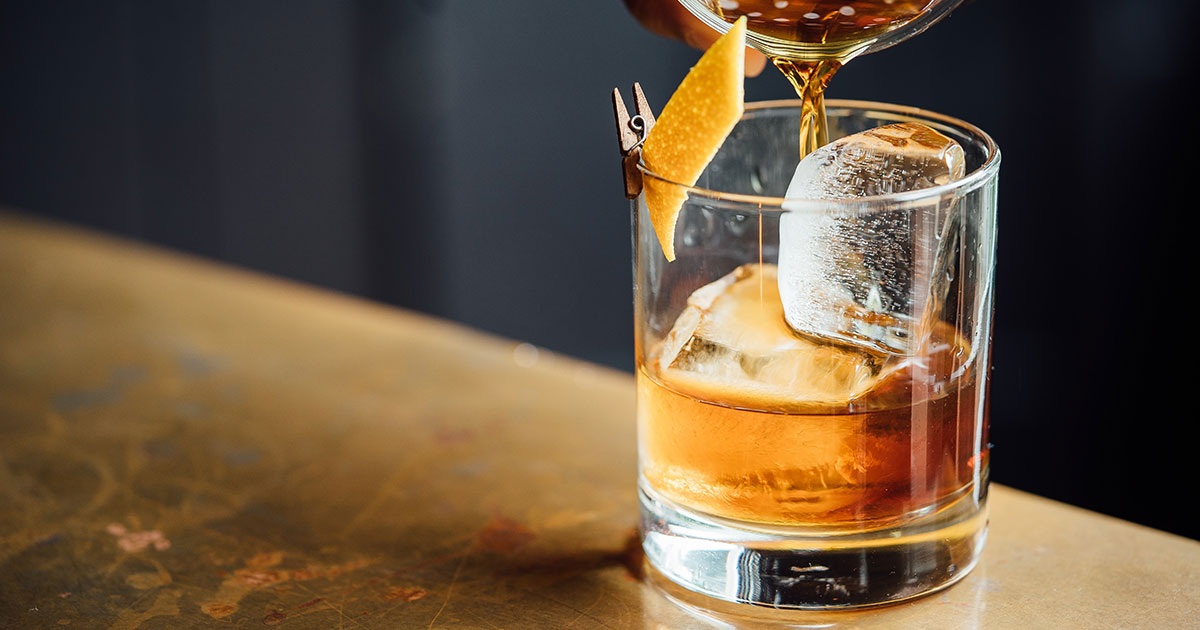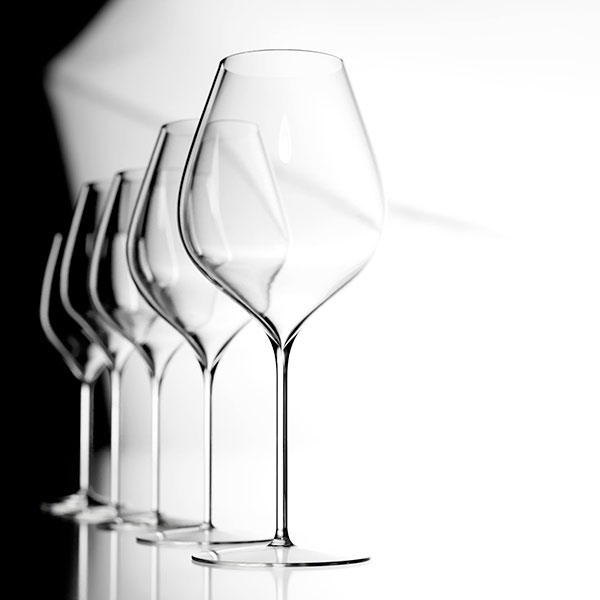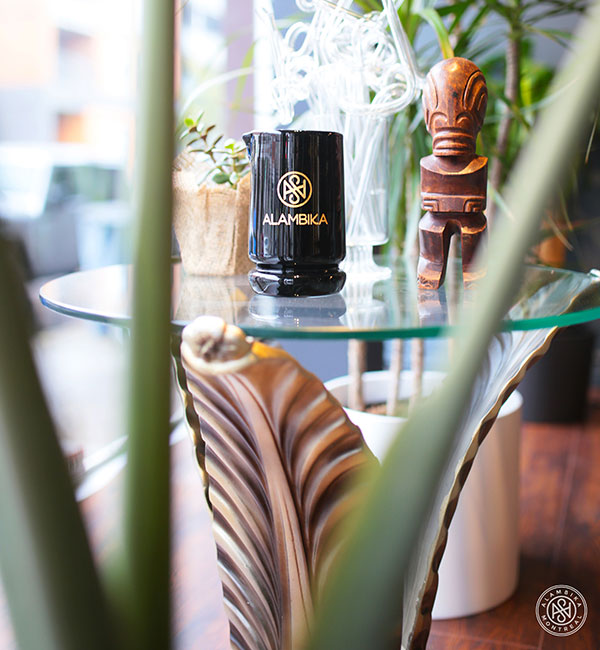The Gentleman Bar : Start fresh with the accessories

A home essential for gentlemen, especially as the holiday season approaches, is having a home bar. This is very interesting, but where do you start? While spirits are a personal choice, accessories can certainly benefit from expert advice in making the right decisions. In order to enlighten you, the owner of the Alambika boutique, Jean-Sébastien Michel, answered our questions on how to begin with the Gentleman Bar.
The Essentials Accessories for The Gentleman Bar

Photograph: Alambika
When starting to assemble our bar at home, what are the essentials to have?
The base obviously consists of an egg cup (three quality pieces or two pieces with a Hawthorne-type strainer), silicone ice cream molds, a juicer, a bar spoon, a measure graduated at a quarter ounce (7.5 ml), half ounce (15 ml) and 1 ounce (30 ml) as well as a mixing glass. These are the essentials for all classic cocktails with moderate dilution.
When you want the best, what can you add?
All these accessories are made in a more qualitative version; it is possible to invest from $15 to $100 on a cocktail maker. For example, at Alambika, we have mixing glasses made of Pyrex in Quebec that are resistant to thermal shocks and others, more popular with professionals, blown from a single piece and even in black version or with foil gold. Cabinetmakers’ mallets, ice breaker bags and decorative picks are nice additions.
On the ingredient side, make sure you have a good bitter: aromatic (e.g., Ms. Betters Aromatic or Angostura) and orange (my favorite is the Bittercube Orange).
An excellent bitter all-around, and in my all-time favorites, besides being local: Saecularis de Sombre et Amer. A real pearl for any gin-based cocktail.
Know what you need!
How to calculate your needs? Do you suggest that we buy all at once or in several installments depending on the evaluation of our consumption?
For accessories, buying the base all at once unlocks most options. The least urgent, in my opinion, is a pestle, unless you are a heavy consumer of mojitos. Then, by discovering your favorite cocktails, you gradually add pieces (Julep cup, Moscow Mule cup, various egg cups, spouts, etc.), that’s part of the happiness. But I tend to think that the real pleasure is to expand your collection of spirits, bitters, cherries, syrups, etc.
Wine and cocktail glasses, another essential of The Gentleman Bar

Photograph: Lehmann
For glasses, what does the price difference mean in tasting a wine or a cocktail? Does the fact that the glass is made in glass or crystal change anything?
These are good questions. Usually, the cost of glass is related to the quality of the material, the more expensive it is, the less flaws it will have, clear and shiny, etc. For wine, shape plays a big role in the perception of aromas. Also, along with the price, there will usually come a smoothness of the parison and the shank.
Cocktail glasses follow a different logic. As we consume frozen cocktails, in general, the perception of aromas has less influence on the choice. Also, they are filled much more than wine glasses. In this context, a higher price will rhyme with additional decorations, exotic shapes, gilding, etc. They are part of the only category where a loaded aesthetic is still de rigueur. There are some more refined, but the cut crystal is still current.
Essentially, early 20th-century wine glasses, small and ornate, make very good cocktail glasses today, while good wine glasses are much larger, neutral and thinner.
For wine glasses, I think you are a fan of “mouth-blown” glasses, therefore handmade, what does that change? And should we have several wine glasses or go depending on what we’re drinking?
Mouth-blown glasses are a bit like Japanese knives, it’s hard to go back to the heavy, machined versions once you’ve got a taste for them! Of course, good machined glasses, every day, will give you a certain pleasure. On the other hand, a pair of Lehmann Psychée or Lallement # 4 will enhance your one-on-one evenings. This is especially true with sparkling wines and champagne. The airy side of these sparkling wines goes so well with the delicacy and finesse of mouth-blown glasses.
Still in the world of wine glasses, how do you know if you are drinking the right wine from the right glass? What are the advantages?
Still in the world of wine glasses, how do you know if you are drinking the right wine from the right glass? What are the advantages?
Things to watch out for: Does the drink (the opening through which we drink) close. Note that a straight cut lets out a lot of aromas. Does the rim of the glass have a bead or is it thin? A kind of glass spaghetti around the edge means it has been hot-cut and is of lower quality.
Is the glass relatively thin? You don’t have to be a piece of paper, but having the least amount of substance between yourself and the wine is kind of the point of the game. Speaking of the game, try this. Take three or four wine glasses of different size and quality and serve the same wine in them. Then smell and taste. It’s a fascinating experience. Some glasses completely extinguish the wine.
Usually, a glass that is too small (below 300–350 ml) or too large has this effect and the angle of the parison (wall) creates this situation. I have often said that the smartest, most economical way to improve your wine cellar is to simply have decent glasses.
In addition, discover the suggestions of glasses for different types of wines by Claude Boileau
The prohibited accessories in the Gentleman Bar
What shouldn’t you have in your bar?
Water glasses for drinking wine. In my opinion, this trend is no. This is only accepted in exceptional circumstances such as the day your favorite glasses are in boxes or when you are in the vineyard with the producer. The rest of the time, it’s like listening to music through headphones that make a frying noise (in this case, read Jean-Daniel Perron’s article on Focal). Old ice, make sure it’s recent. A martini made with old ice cream, we are at an extreme of that of James Bond. Speaking of Martini, be sure to keep fortified wines (vermouth, sherry, etc.) in the refrigerator and your liquor bottles in general well away from heat and direct light.
Compared to ice precisely, what does that change in making a cocktail with old ice?
There are several factors. Old ice will give an unpleasant taste. Also ice that is too small or crumbly will dilute your cocktail a lot.
Is there an accessory that is useless, but which you cannot resist because it looks too good or makes a wonderful decoration, for example?
It’s not unnecessary, but … an absinthe fountain is wonderful! A golden fairy on a fireplace mantel, which starts a lot of conversations!
What is the difference between buying on Amazon or from Alambika for example?
We have experienced cocktail advisors. You find local products that you can taste (normally) before buying, which is rarer at the American giant. We also have exclusive accessories created by local artisans.
What should you watch out for when shopping online?
I would tell you the “kits” pre-assembled by non-specialists. The sets will sometimes include an excessively large colander, unnecessary accessories, etc. It’s the same with knives, you think you’re making a good buy with a 9-knife block and ultimately you always use the same two. Having invested the block price on two well-chosen instruments would undoubtedly have been much more judicious.
Trends and suggestions

Photograph: Alambika
What should you have in your bar for years to come as a gentleman?
Products and objects made locally, as in all fields, but also increasingly qualitative glassware. When I started out, all you could buy as specialty cocktail glasses were Martinis and Hurricanes glasses. These were also often too bulky. The superior or extremely delicate and worked ranges of bitters are aromatics that help to renew classics.
Do you have a product suggestion for a gentleman?
At Alambika, we have just launched a collection of bar items in black colour. It’s really elegant. Also, a good choice is a limited edition Tiki glass. It’s a bit for the hobbyists, but producers like Tiki Farm, whom we collaborate with, make them small series with artists and only produce them once. A good bar knife (eg a Japanese paring knife) is also impressive and perfect in the gentleman bar.




